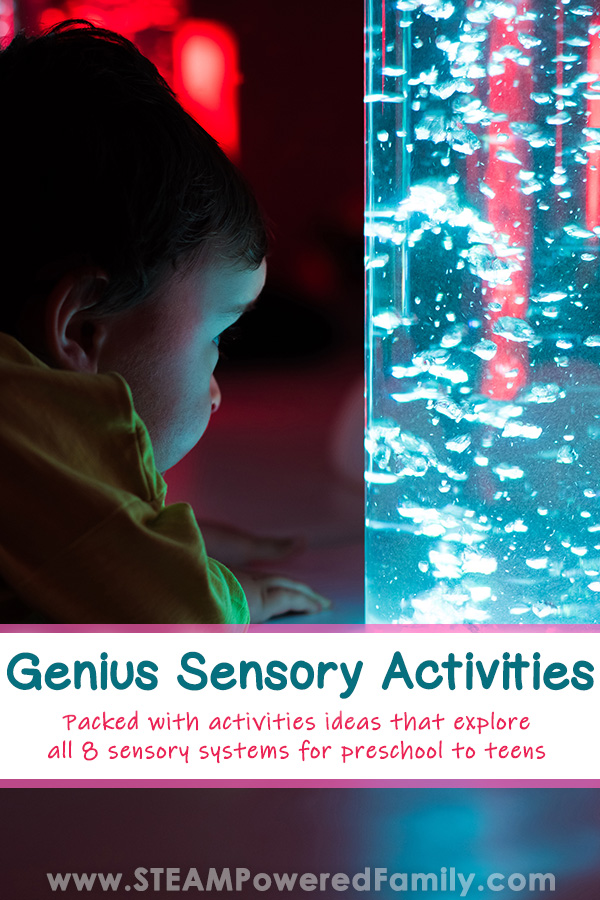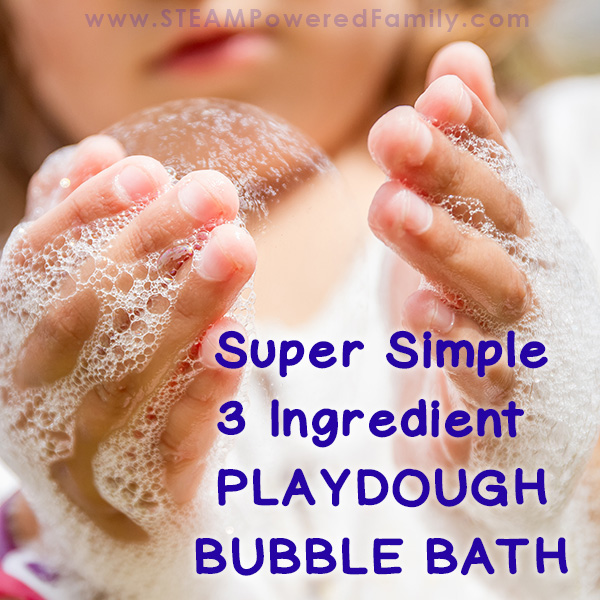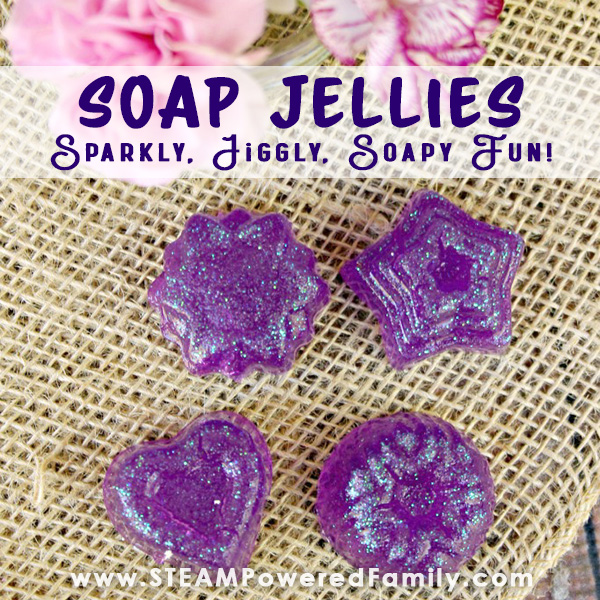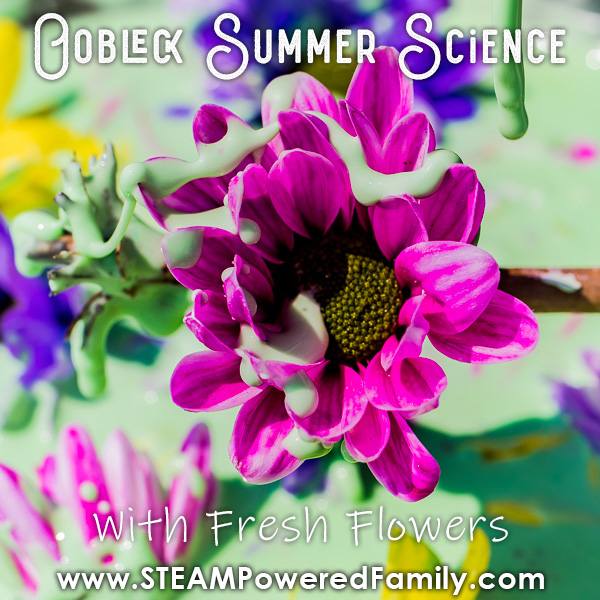Genius Sensory Activities for Kids
Sensory activities are an important tool for kids of all ages. It is a vital component of childhood mental health. Sensory activities help ground children and connect them with their bodies and environment. When kids are little, it can be easy to come up with sensory ideas, but as they get older it can be a struggle. Here are 20 sensory activity ideas for kids in elementary through teens.
The Best Sensory Activities for Kids
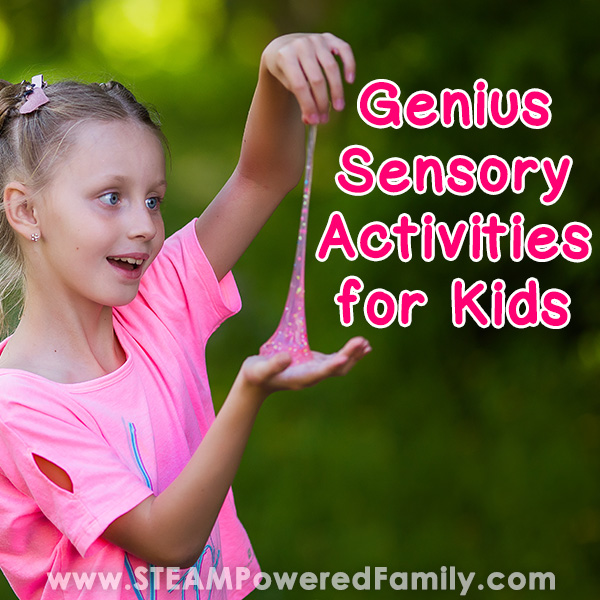
Disclaimer: This article may contain commission or affiliate links. As an Amazon Influencer I earn from qualifying purchases.
Not seeing our videos? Turn off any adblockers to ensure our video feed can be seen. Or visit our YouTube channel to see if the video has been uploaded there. We are slowly uploading our archives. Thanks!
Oobleck
Oobleck is another slime like substance that we love due to it’s science lessons and versatility. First, it is a non-Newtonian Fluid which means it is a totally wild and crazy material that doesn’t behave at all how you would expect. It turns solid under pressure, then liquefies when you release the pressure. You can freeze it, make it change colours through heat or chemical reactions, you can make it glow in the dark, or do some fascinating Oobleck science fair investigations. You can even use it in a mind blowing Egg Drop Challenge. This is one sensory science project kids of all ages will have fun exploring. Just make sure to check out our favourite Oobleck recipe to get the most amazing results.
Learn how to make favourite Oobleck recipe here.
Slime
You can’t talk about sensory projects without mentioning slime. Whether you love it, hate it, or are indifferent, the popularity of slime with kids, tweens and teens is undeniable. It took us a while to find a recipe that worked for us, but once we did, slime was all my kids wanted to do for months. We loved putting fun spins on our slime projects by making things like slime volcanoes, Harry Potter slime, glow in the dark slime, crunchy floam slime, and more.
Learn how to make the best slime recipe here.
Moon Dough
Moon dough also known as Cloud Dough or Snow Dough, is one of our favourite sensory play activities. With our special recipe, we sneak in some fascinating science that has kids of all ages excited to create their special Moon Dough. Whether it has a theme like Ocean or Snow, or Glows in the Dark, Moon Dough is a silky sensation that is sure to be a hit.
Learn how to make our special Moon Dough recipe here.
Kinetic Sand
This is one fun sensory activity that is similar to Moon Dough but a bit stiffer and grittier. Great for when you want to build and play with the grittiness of sand but without the outdoor mess.
Learn how to make Kinetic Sand at home with this easy recipe.
Sensory Bottle or Jar
One of the most common sensory projects is to make a Sensory Bottle or Jar. These bottles are very easy to make and you can fill them with all sorts of creative items. Have your child pick a theme that interests them and get creating their own special sensory jar.
Find out how to make a sensory jar here with our Space Travel Sensory Bottle Project
Sensory Bins
There are so many different ideas for making sensory bins. They are fantastic for younger children, but even older kids can get in on the fun. Simply spice them up by including items that interest your kids. One of our favourites is to make a crystal sensory bin or do a nature sensory bin built with items discovered while on a mindful walk through nature.
Learn how we made our special Harvest Sensory Bin here.
Baking Bread
A wonderful way to integrate sensory activities for older kids is to tie it into real life. Baking bread is a wonderful way to encourage tweens and teens to get involved in a sensory task. The kneading is fantastic. Plus they learn valuable life skills and are rewarded with delicious, steaming hot bread after they are finished.
Learn how to make our simple White Bread Recipe here.
Bath Bombs
Making and using bath bombs can be an incredible sensory task for older kids. Start by gathering your ingredients and mixing them all together to make your bath bombs. This is best done with your hands to really work all the ingredients together until they feel like wet sand. After your bath bombs are all made up, enjoy a wonderful sensation of bathing in the fragrant, fizzy bath bomb waters.
Learn how to make Bath Bombs here.
Playdough
Playdough is one of the first sensory activities most people think of. Almost everyone has played with playdough at some point. It was a staple for many of us throughout our childhood. As an parent and educator, playdough is still an important part of providing important sensory inputs for my kids. It is so creative and it helps build fine motor skills. Whether you are making Pokemon Playdough, Sunflower Playdough, Kool-aid Rainbow Playdough, Edible Playdough or Bubble Bath Playdough (yes you use it in the bath!), playdough is a fantastic sensory experience.
Learn how to make playdough at home.
Ninja Training
When it comes to heavy work, some kids thrive with the inputs of doing big physical movements and getting that important Vestibular System (sense of where you are in space) and Proprioceptive System (sensations from muscles and joints). Doing this kind of work can be very regulating for children.
Learn how we created a ninja training program with tires.
Make a Drum
In this activity, kids get to build their own musical instrument, a beautiful drum. Then create a heartbeat style drumming beat to help guide kids through a calming sensory experience. Or just let them drum and feel the vibrations through their hands, and the sounds with their ears.
Nature
In a perfect world, kids would get all the sensory play they need from nature and playing outside. Sadly, there are a number of reasons this might not be possible. It may be that you live in a climate where you need to bundle up most of the year, preventing that important skin to nature contact, or maybe there are special needs at play, or maybe you live somewhere that is more concrete jungle than forest. I hope the ideas above help you meet your children’s sensory needs if having sensory play in nature is not possible. But I still encourage you to get out into nature whenever possible. My teens still LOVE a good hike or swim outdoors.
Tips on how to enjoy hiking with kids.
Tips for Improving the Sensory Experience
With any of these sensory activities there are things you can do to increase the quality of the sensory experience. The way you do this depends on your goals, the sensory needs of the child and their sensory preferences.
Keep in mind the 8 different sensory systems:
- Visual (sight)
- Auditory (hearing)
- Olfactory (smell)
- Gustatory (taste)
- Tactile (touch)
- Vestibular (place in space)
- Proprioceptive (sensations from muscles and joints)
- Interoception (senses from internal organs)
Then work towards incorporating each of these systems whenever possible and as needed.
Visual
You can get so creative with bringing in visual stimulation, but one way we really enjoy adding in a visual component is to make our sensory experiences glow in the dark. We have made glow in the dark slime, glow in the dark moon dough, glow in the dark oobleck, glow lava lamps (similar to sensory bottles, and even glow in the dark bath bombs.
Auditory
Bring in some auditory experiences by including bells or containers to a sensory bin. The sound of rice or pasta from the sensory bin moving through containers can be a very soothing sound. With my older kids, we like to play some favourite music while doing our sensory activities.
Olfactory
For instance with Oobleck, Slime, Moon Dough, Kinetic Sand, Playdough and Bath Bombs you can bring in an amazing olfactory sensory experience by using essential oils in your recipe. Chose oils that have specific responses like lavender for calming, or go based on the preferences of the child.
Gustatory
Bringing is taste to your sensory experience can be so much fun! Make a variety of breads like white bread, bannock, soda bread and no knead bread and do a taste test. Make edible fudge playdough. Or make a sensory bin filled with edible foods. Candy themed sensory bins have been a big hit around here, but just be careful about too much sugar!
Tactile
The sense touch is an incredible sensory experience. We recently did a deep dive using our tactile sense as we explored different Oobleck recipes. The difference feel based on changing one ingredient was huge. Another way we love bringing in the sense of touch is by using heat reactive pigments to make our products change colour with our touch. We had so much fun doing this with Thermochromatic Oobleck.
Vestibular
This is so much fun when you can get outside and get big with moving through space and feeling the effects of gravity. One thing I dream of doing one day is a big Oobleck Pool and having the kids practice running across it, jumping on it, etc.
Proprioceptive
If you need to build fine motor skills and strength, add items your Oobleck, Slime, Moon Dough, Kinetic Sand, Playdough and have the kids work to extract the items. Some examples include Crystal Slime, Hide and Seek Oobleck, Ocean Moon Dough or Sunflower Playdough.
Interoception
You can help your child become more attuned to their internal sensations by talking about their experiences and what they are feeling as they explore. Perhaps while doing the Ninja Tire training you can practice taking their heart rate so they can start to recognize when their heart rate is elevated but also when it regular. Or play with something like Frozen Oobleck and exploring the feeling of “cold”.
Most of all, make sensory play fun!
Free 5 Senses Printable
Reinforce learning of the senses with our free 5 Senses Printable Activity Pack. Available to all members of the STEAM Powered Family mailing list.
